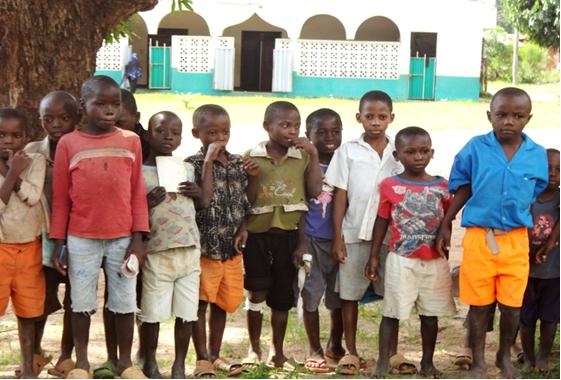Updated 24 July 2012
The Jaffery Medical Board of Mombasa had a vision to establish a mobile clinic to serve the rural areas around Mombasa. This vision was realized on the 6th of June 2012, when the fully equipped mobile clinic made its first visit to the remotest area around Mombasa.
The Jaffery Medical Centre(JMC) in Mombasa is managed by the Jaffery Medical Board of the Mombasa Jamaat. The Centre has just completed five years of its existence.
JMC provides outpatient service and is manned by two doctors and one dentist, besides the requisite support staff. There is a fully equipped laboratory operated by fully qualified technicians, x-ray and ultrasound units and a well-equipped dental clinic. Medicines are dispensed under the guidance of the doctors.
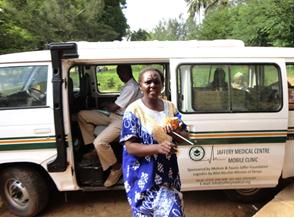
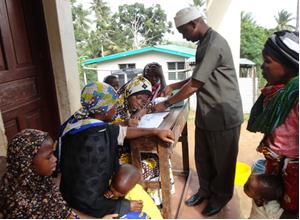
The mobile clinic operates in two of the poorest districts of Mombasa. Kwale District and Msambweni District.
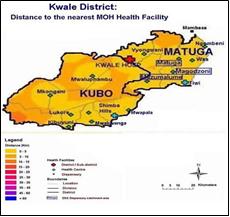 A brief Overview of Kwale District
A brief Overview of Kwale District
Kwale district is one of the thirteen districts that constitute Coast Province. It is located in the South Eastern corner of Kenya. It is bordered by Kinango district in the west, Mombasa District and the Indian Ocean in the East and Msambweni district in the South. The District is among the poorest in the country, with poor road network and diverse socio-cultural beliefs which pose a great challenge in the provision of health service to the community.
|
|
Description |
District proportions |
Population |
Population served by community units |
Proportion served
by community units |
|
1 |
Total catchment population |
|
161,053 |
5154 |
3.2 |
|
2 |
Total number of house holds |
|
30,239 |
968 |
3.2 |
|
3 |
Children under 1 year (12 months) |
3.42% |
5,508 |
176 |
3.2 |
|
4 |
Children under 5 years (60 months) |
16.2% |
26,091 |
835 |
3.2 |
|
5 |
Under 15 year population |
42.3% |
68,125 |
2180 |
3.2 |
|
6 |
Women of child bearing age (15 – 49 Years) |
24.6% |
39,619 |
1268 |
3.2 |
|
7 |
Estimated Number of Pregnant Women |
3.7% |
5,959 |
|
|
|
8 |
Estimated Number of Deliveries |
3.7% |
5,959 |
|
|
|
9 |
Live Births |
3.68% |
5,932 |
190 |
3.2 |
|
10 |
Estimated Number of emergency obstetric complications |
0.75 |
1,208 |
39 |
|
|
11 |
Estimated Number of Post-Abortion Cases |
0.75 |
12,08 |
39 |
|
|
12 |
Total number of Adolescent (15-24) |
20.3% |
32,694 |
1046 |
3.2 |
|
13 |
Adults (24-59) |
32.8% |
52,825 |
1690 |
3.2 |
|
14 |
Elderly (60+) |
3.1% |
4,993 |
160 |
3.2 |
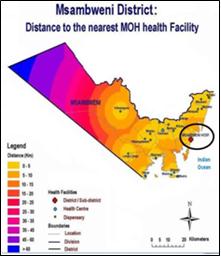 A brief Overview of Msambweni District
A brief Overview of Msambweni District
Msambweni is one of the thirteen districts in the Coast province. It borders Taita District to the North West, Kinango District and Kwale District to the North East, Republic of Tanzania to the South and Indian Ocean to the South East. The district is divided into 3 administrative divisions, namely Msambweni, Lungalunga and Diani. It has 11 locations and 24 sub-locations as shown in the table below.
Key Health Indicators
A critical look at the key health indicators reveals a very poor health status of the population in Msambweni district. Indeed, all the indicators are way below the national average.
Directly linked water, sanitation and hygiene related diseases account for over 25% of the overall disease burden in the district. Malaria, which is a major contributor to the disease burden (over 40%) in the district, has a direct correlation with the way we manage our environment.
|
Indicator |
Msambweni |
National |
|
Crude Death Rate |
13.7/1000 population |
11.7/1000 population |
|
Crude Birth Rate |
48.3/1000 population |
41.3/1000 population |
|
Maternal Mortality Rate |
650/100,000 deliveries |
414/100,000 deliveries |
|
Infant Mortality Rate |
91.5/1000 live births |
77.3/1000 live births |
|
Child Mortality Rate |
149/1000 live births |
116/1000 live births |
Morbidity profile
The top ten causes of out-patient disease between January and June 2010 in Msambweni district were as shown below:
|
1. Malaria 41% |
|
2. URTIs 25% |
|
3. Skin diseases 10% |
|
4. Pneumonia 8% |
|
5. Diarrhea 7% |
|
6. Intestinal worms 3% |
|
7. Eye infections 2% |
|
8. Ear infections 2% |
|
9. Anemia 1% |
|
10. Chicken pox 1% |
Five centres were identified within these two districts on the South Coast with the help of the Bilal Muslim Mission of Kenya. Each of these centres is part of a cluster of villages. The mobile clinic visits each centre once a week between Monday and Friday and service is provided to society in general irrespective of religion, caste, colour or creed.
The mobile clinic is sponsored by the Mohsin and Fauzia Jaffer Foundation of the USA while the Bilal Muslim Mission of Kenya is providing logistical support for which Jaffery Medical Board is indebted to both.
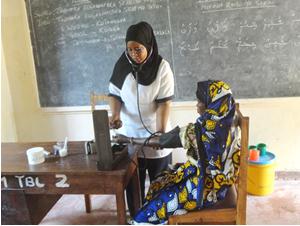
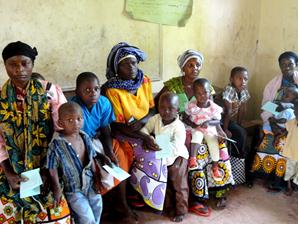
The first visits to the five sites resulted in rather high attendance. The average number of patients that are now attending stands at 130 per day. A wide range of ailments have been seen. This includes Anaemia, Bilharzia, Malaria, Diabetes, Diarrhoea, Hypertension, Respiratory problems, Urinary tract infections and skin allergies.
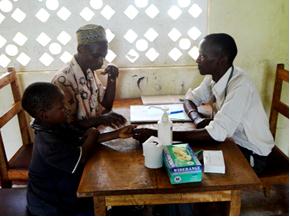
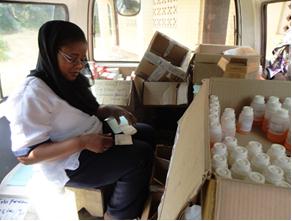
It is envisaged that the coverage of the Mobile clinic will be expanded once all teething problems are overcome.
